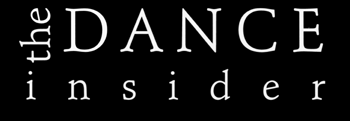|
|
the
New York manufacturer of fine dance apparel for women and girls. Click here to see a sample of our products and a
list of web sites for purchasing.
With Body Wrappers it's always performance at its best.
|
Go back to Flash Reviews
Go Home
Women
on the Verge, 1: Transformations
Cycling the Journey with Dawn Akemi Saito
By Peggy H. Cheng
Copyright 2003 Peggy H. Cheng
NEW YORK -- "Blood Cherries,"
written and performed by Dawn Akemi Saito at Dance Theater Workshop
as part of its Carnival series, is a solo performance that is fully
saturated, deeply moving, and peppered with degrees of humor and
kindness. The key collaborators in the piece feel truly key to the
process of this journey, matching Saito's dynamic shifts point for
point with widely imaginative and compelling lighting by Philip
W. Sandstrom, striking visuals by Eva Mantell, and a sound and music
score designed by David Van Tieghem that is often the wave that
the text rides. The work is directed by Jonathan Rosenberg and Sabrina
Peck, with choreography by Peck and Saito, and dramaturgy by Robert
Uno. Saito's one-person show is backed by a team of intelligent
artistic choosers and implementers, giving her already strong force
as a performer increased impact.
Saito undergoes a kind
of ancestral journey, an exploration of the spirits of her characters,
spending time as a rearing and restless horse, the mother, the living
and dying father, the French husband that is also a Jesuit priest
in training, and the young woman who is the daughter and wife. The
text is often tongue-twisting, but somehow the words fell into my
ears through their flow and rhythm, allowing the puzzle pieces of
the story to knit together as the scenes came and went. The father,
mother, and husband are played with a sincerity and kindness that
allows their faults to be the reasons we care about them even after
they anger us.
The physical transformations
that Saito is capable of undergoing are an easy hook for my interest.
As the characters reveal more and more, the transformations increase
in intensity; like memories or dreams, the faces melt into each
other, and Saito's body begins to look as if it will explode. The
body becomes a casing, bursting with the life/spirit/story within.
As I watched I felt at times emotionally moved, at other times fascinated
by the visual spectacle I saw before me. The exploration of the
distorted and contorted can be seen throughout and is underlined
by the various elements in the piece. There is even a metamorphosis
within the father character from one version to another version:
the Buddhist priest strong-jawed father becomes a cool cat of a
jazz musician, still dispensing his wisdom but with a much looser
lip.
At the end, Saito stands
before a clean slate: a kind of supernatural and expansive light,
as when the sunlight is strangely white, and people are willingly
or not taken into this light. It is at once a beginning and an end,
and like an earlier vignette in which an image of a circle, perhaps
a moon or sun, is slowly filled, the light recedes and fills at
the same time, remaining complete, continuing to fulfill its cyclical
journey.
Dawn Akemi Saito performs
again Saturday at 7 p.m. and Sunday at 2 p.m.. For more information,
please visit the Dance Theater Workshop web
site.
Go back to Flash Reviews
Go Home
|


